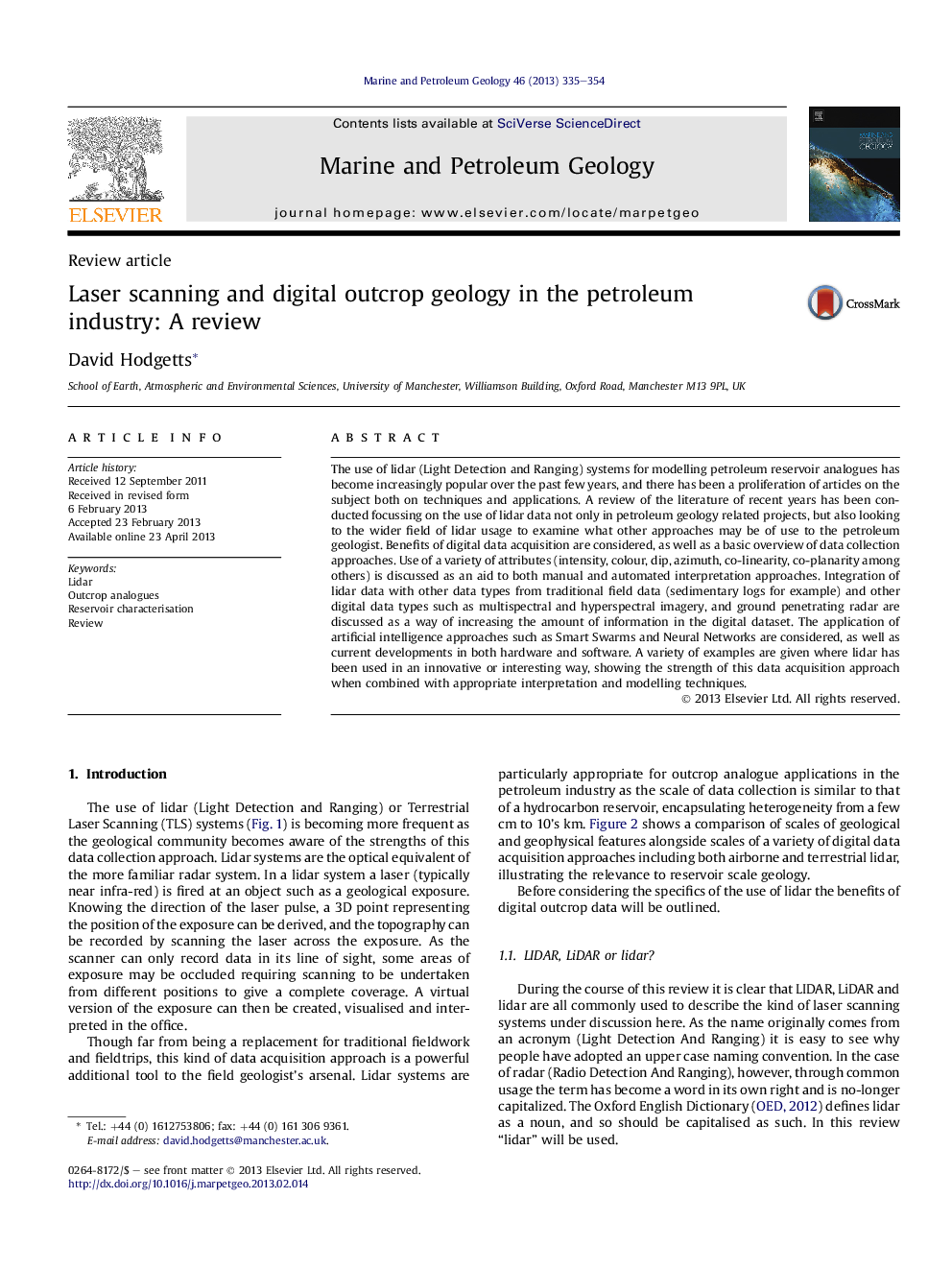| Article ID | Journal | Published Year | Pages | File Type |
|---|---|---|---|---|
| 4695705 | Marine and Petroleum Geology | 2013 | 20 Pages |
•Lidar in petroleum geology and reservoir characterisation.•Point cloud, mesh and photo-realistic visualisation approaches.•Generation and analysis of lidar attributes.•Geostatistics from lidar databased outcrop models.•Future developments in lidar data.
The use of lidar (Light Detection and Ranging) systems for modelling petroleum reservoir analogues has become increasingly popular over the past few years, and there has been a proliferation of articles on the subject both on techniques and applications. A review of the literature of recent years has been conducted focussing on the use of lidar data not only in petroleum geology related projects, but also looking to the wider field of lidar usage to examine what other approaches may be of use to the petroleum geologist. Benefits of digital data acquisition are considered, as well as a basic overview of data collection approaches. Use of a variety of attributes (intensity, colour, dip, azimuth, co-linearity, co-planarity among others) is discussed as an aid to both manual and automated interpretation approaches. Integration of lidar data with other data types from traditional field data (sedimentary logs for example) and other digital data types such as multispectral and hyperspectral imagery, and ground penetrating radar are discussed as a way of increasing the amount of information in the digital dataset. The application of artificial intelligence approaches such as Smart Swarms and Neural Networks are considered, as well as current developments in both hardware and software. A variety of examples are given where lidar has been used in an innovative or interesting way, showing the strength of this data acquisition approach when combined with appropriate interpretation and modelling techniques.
